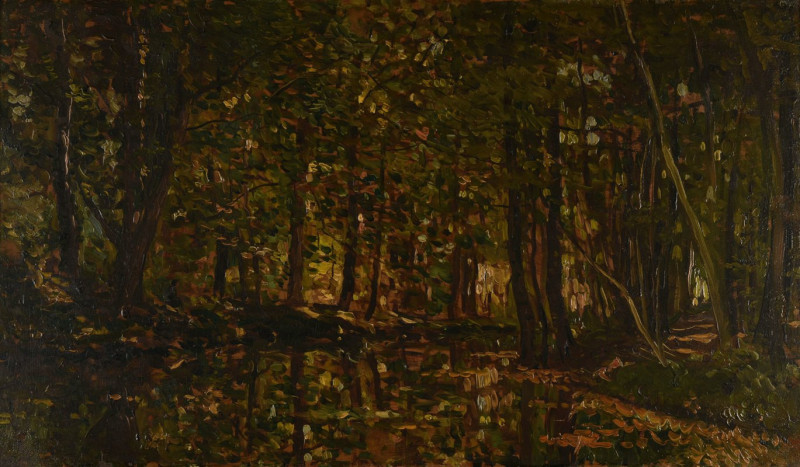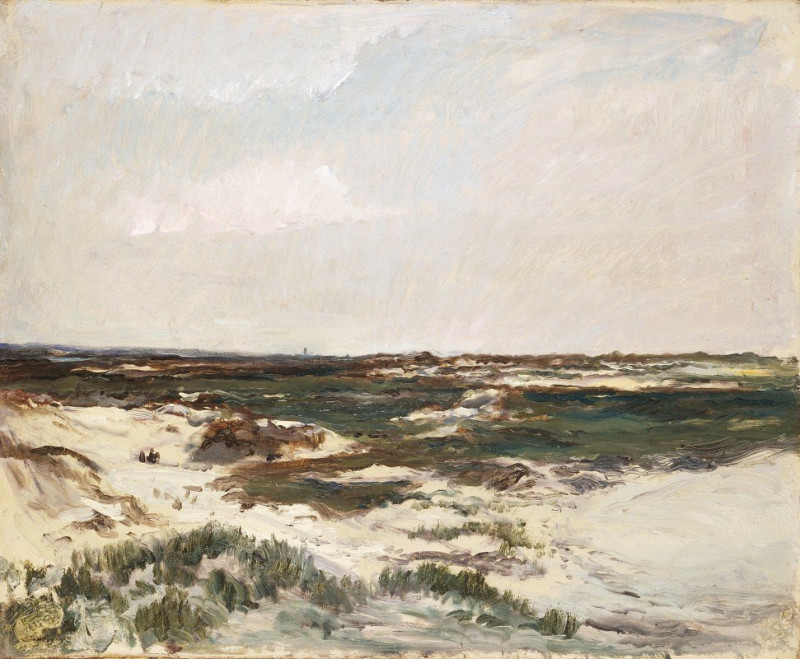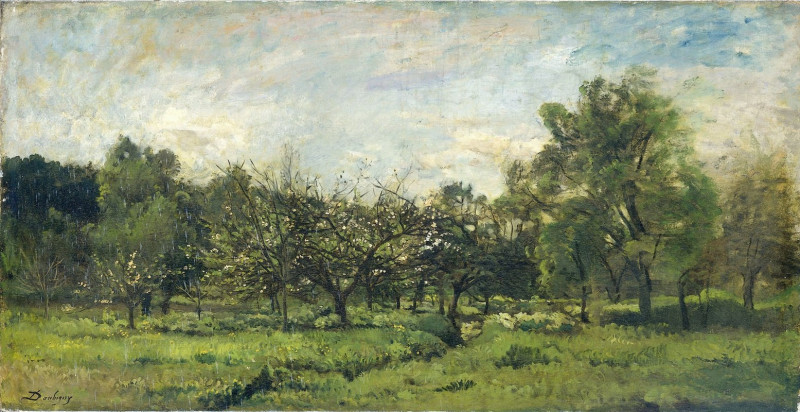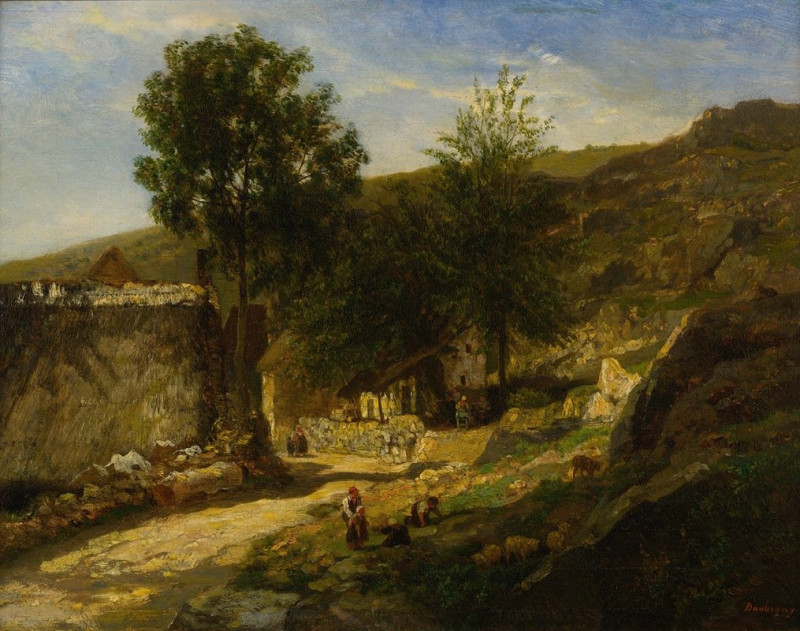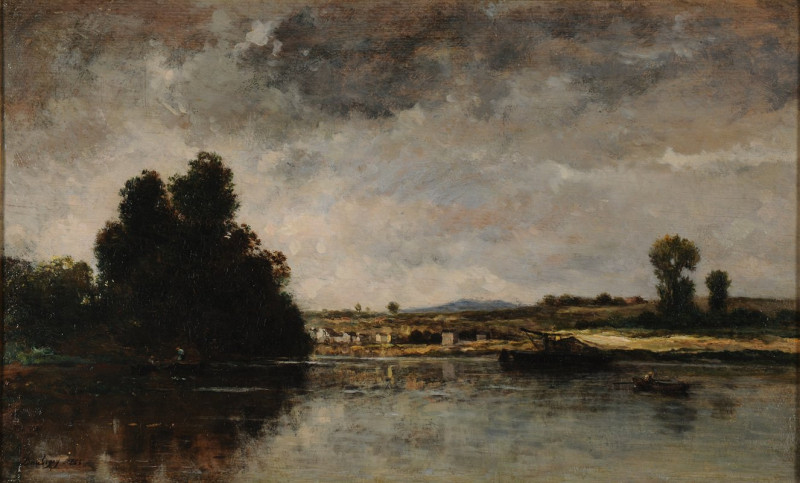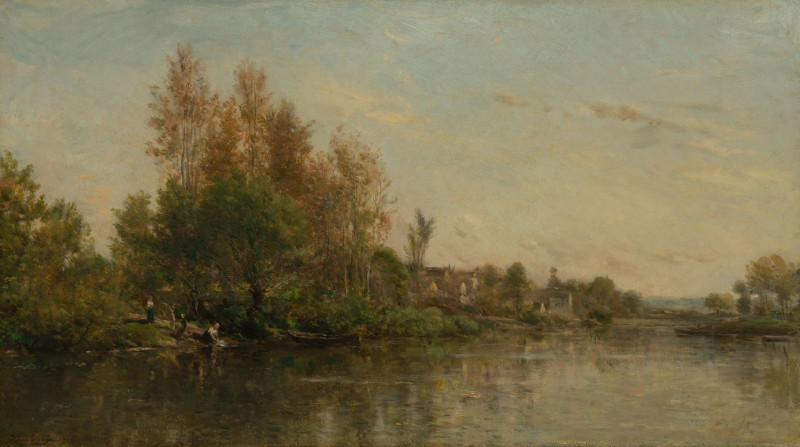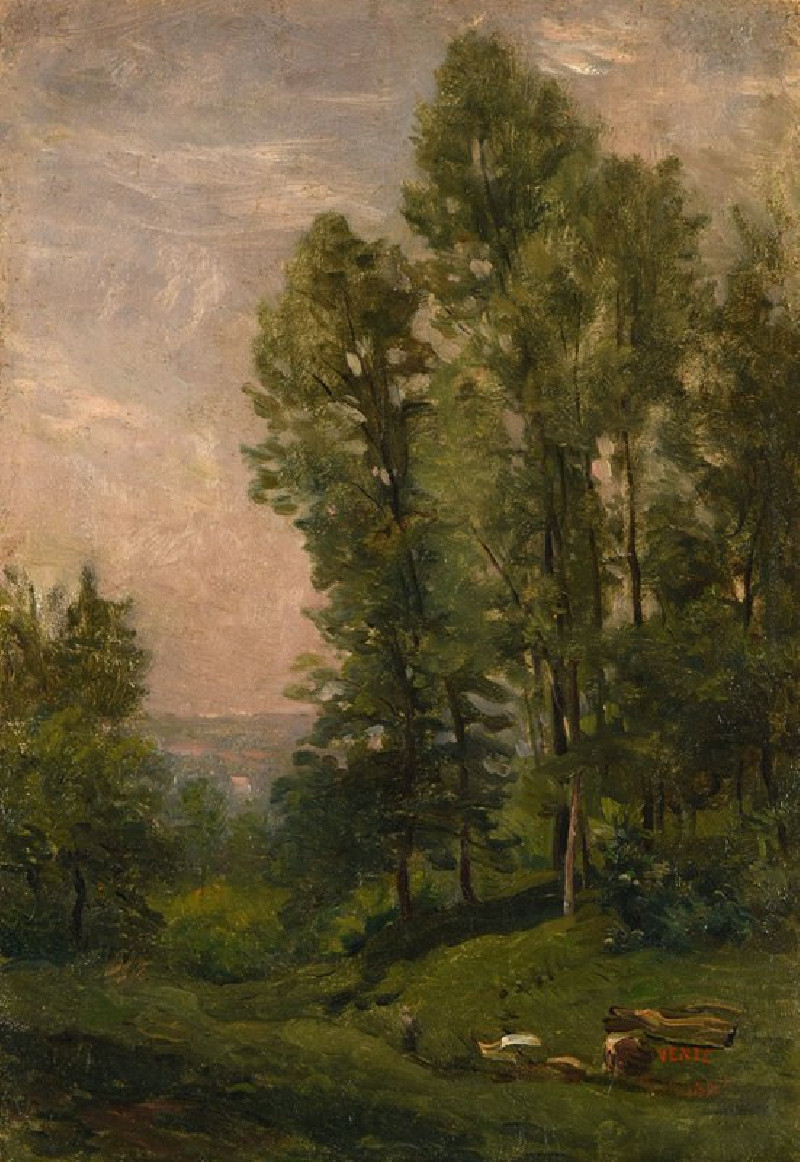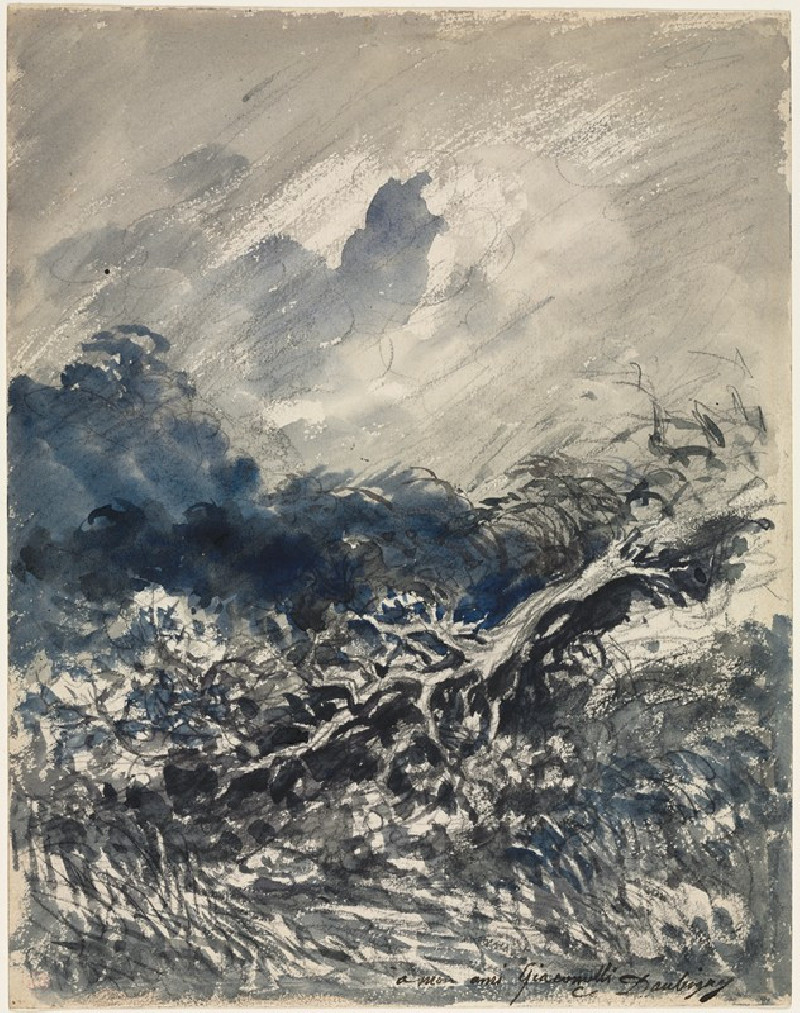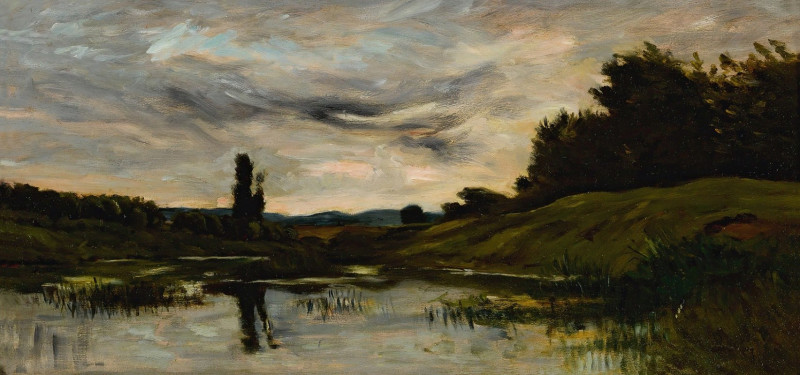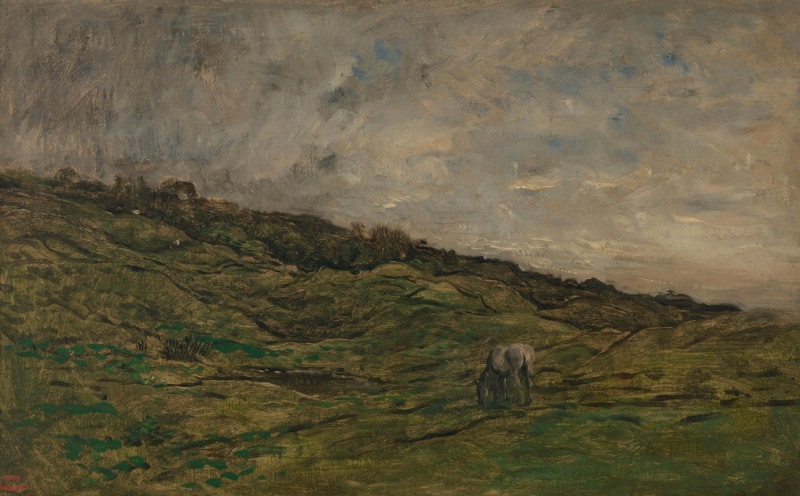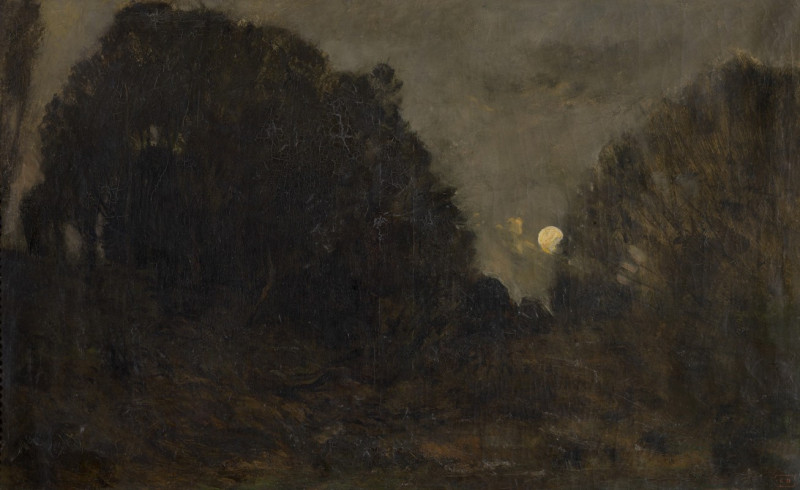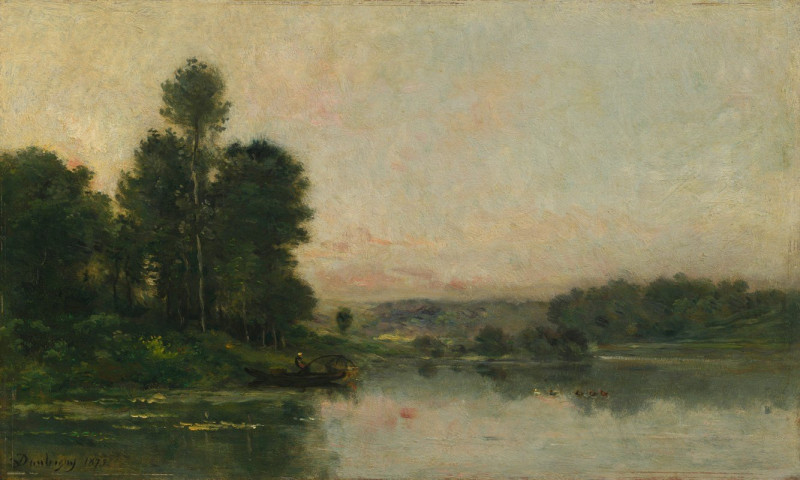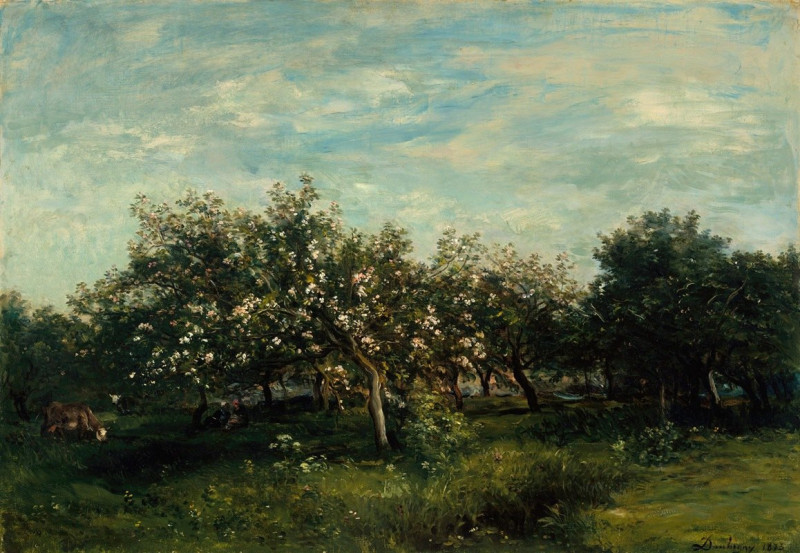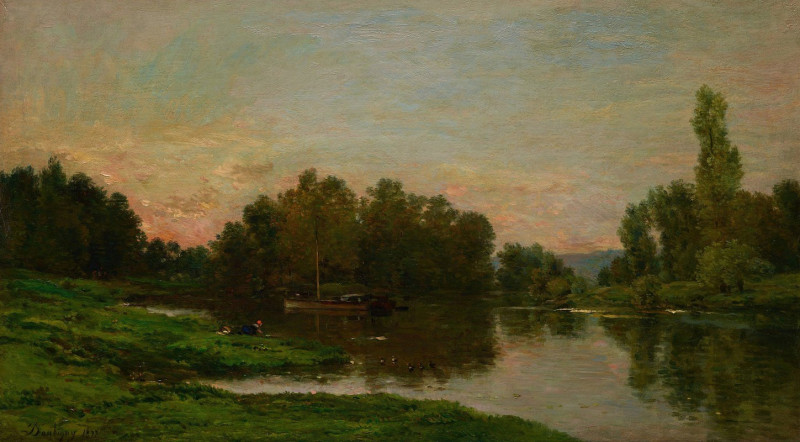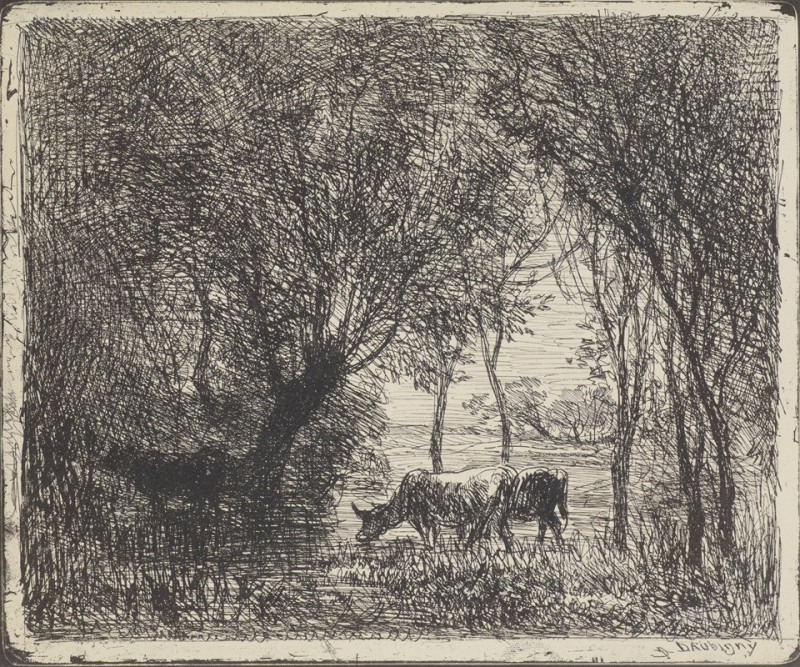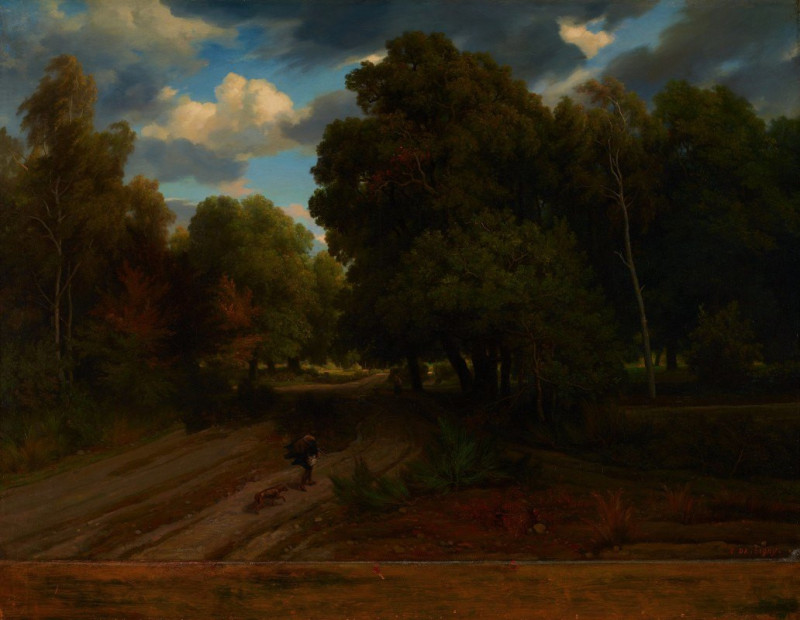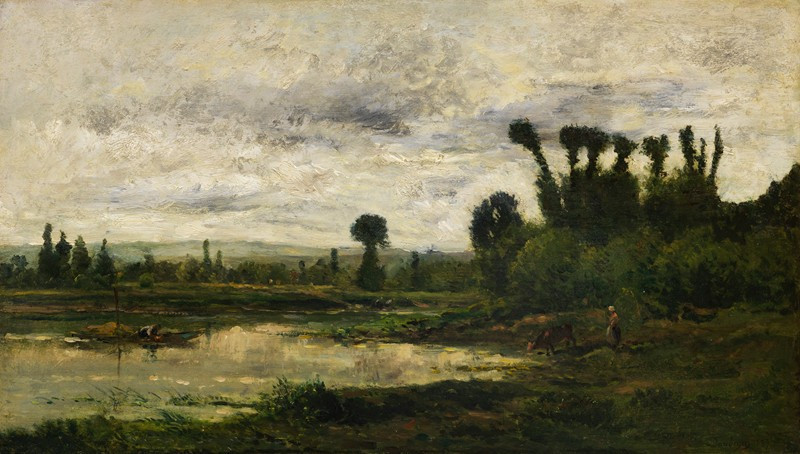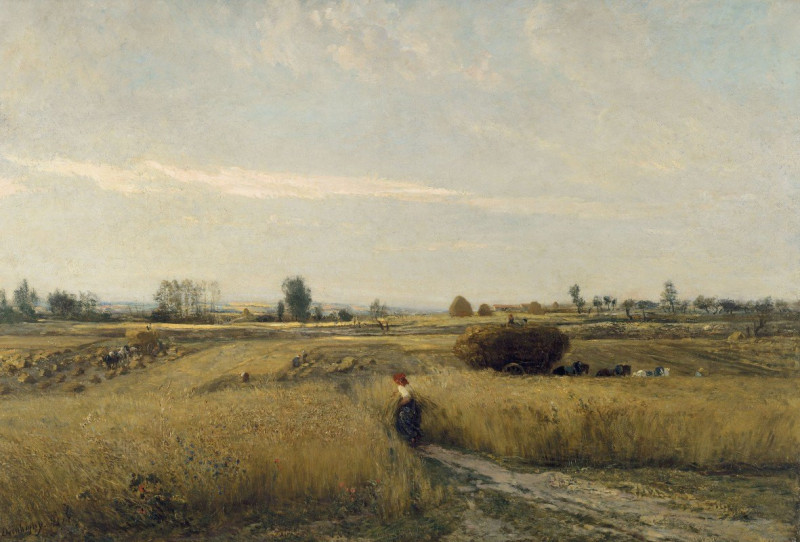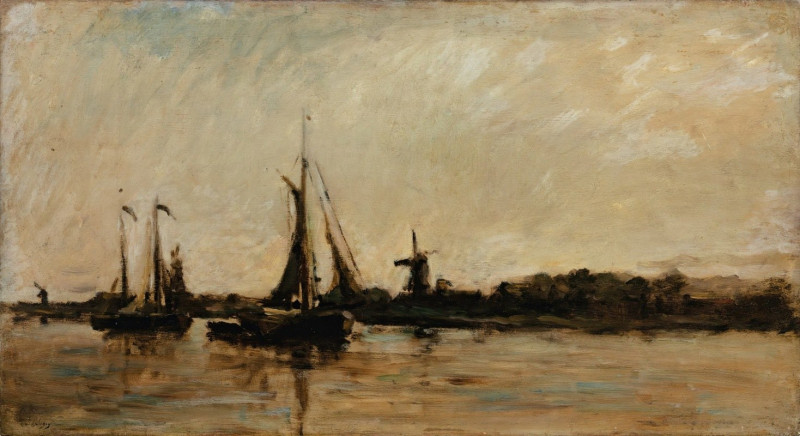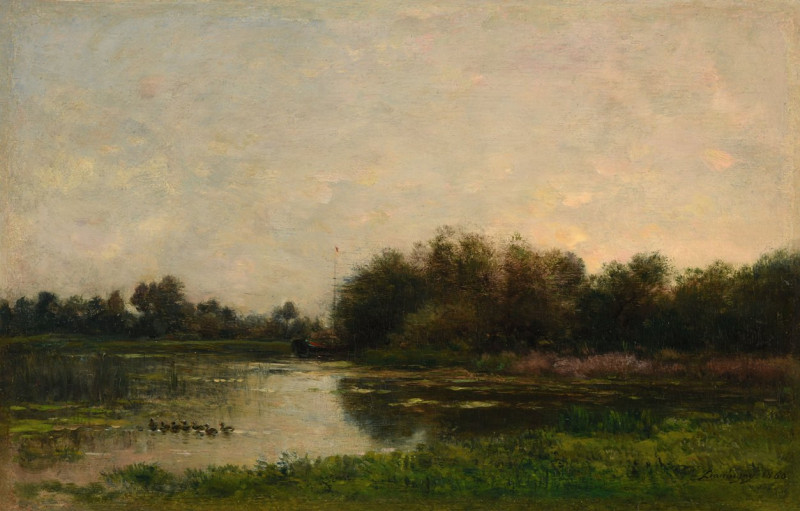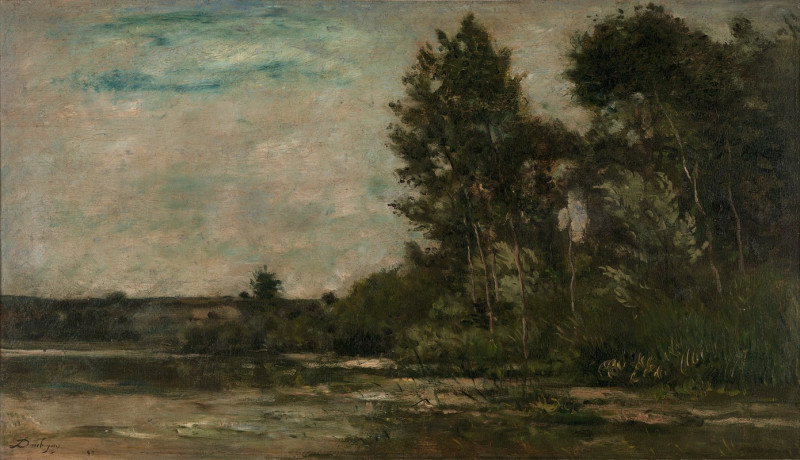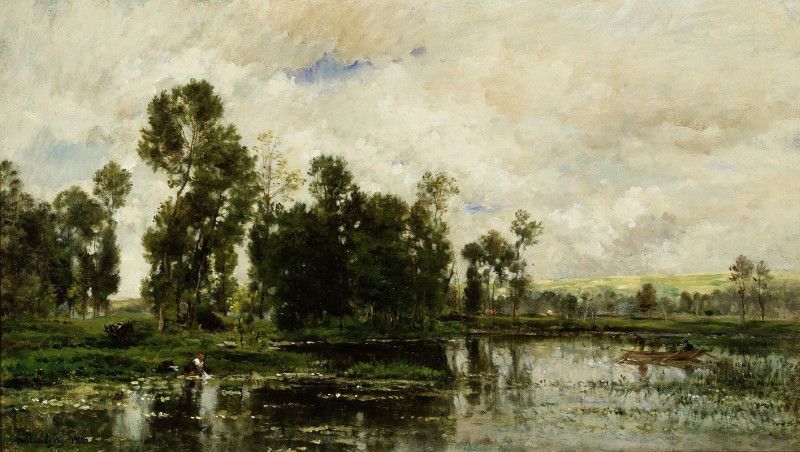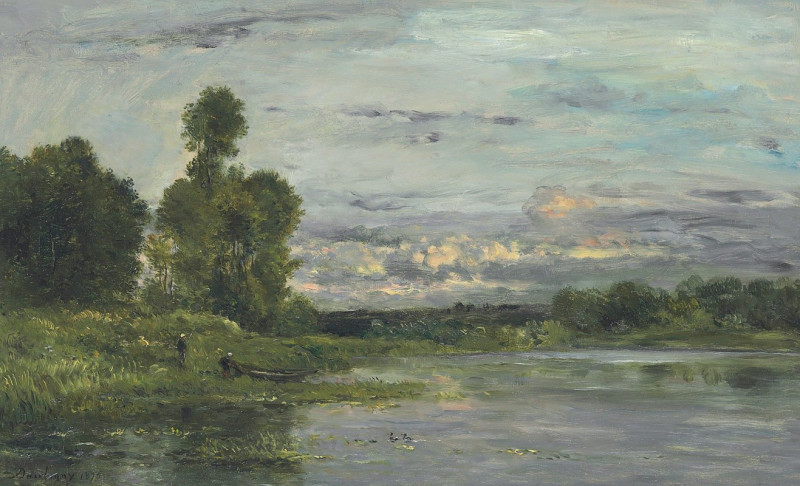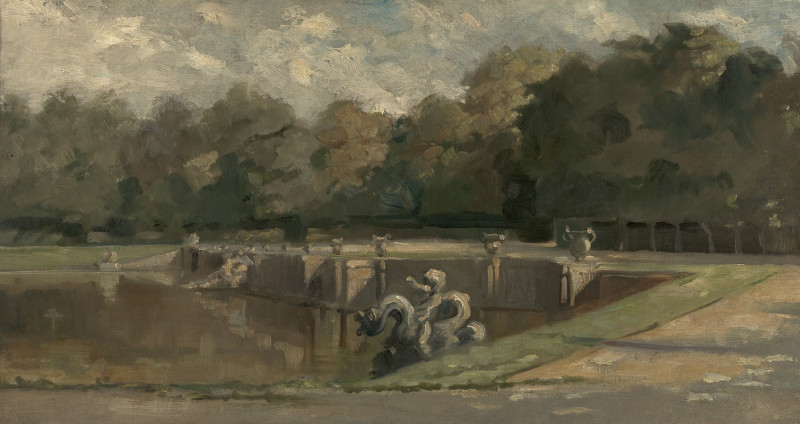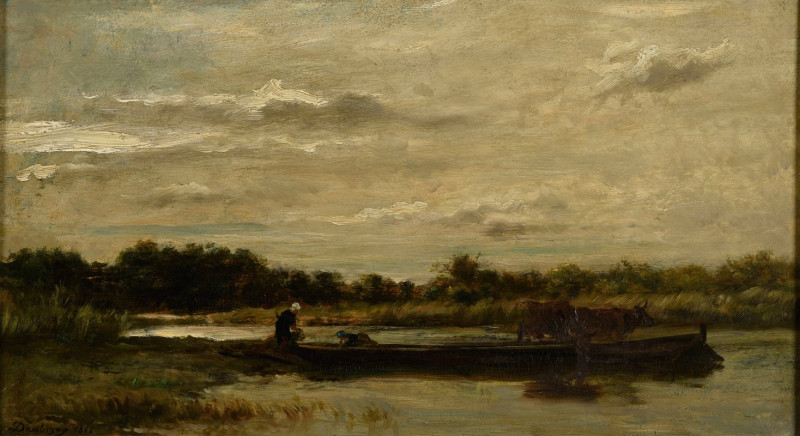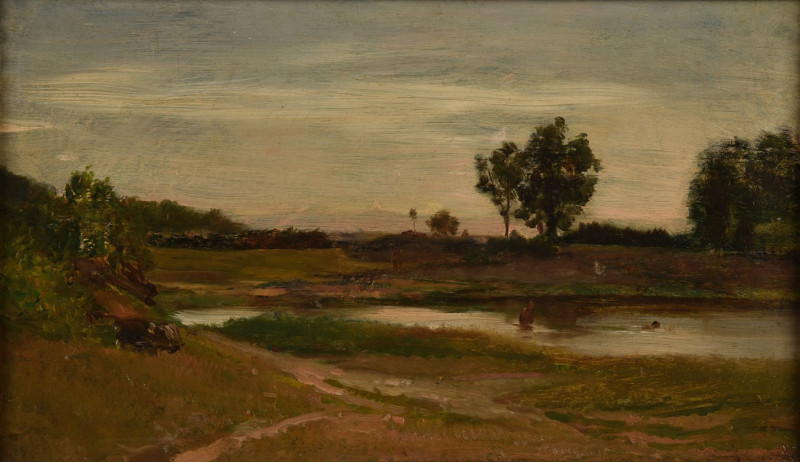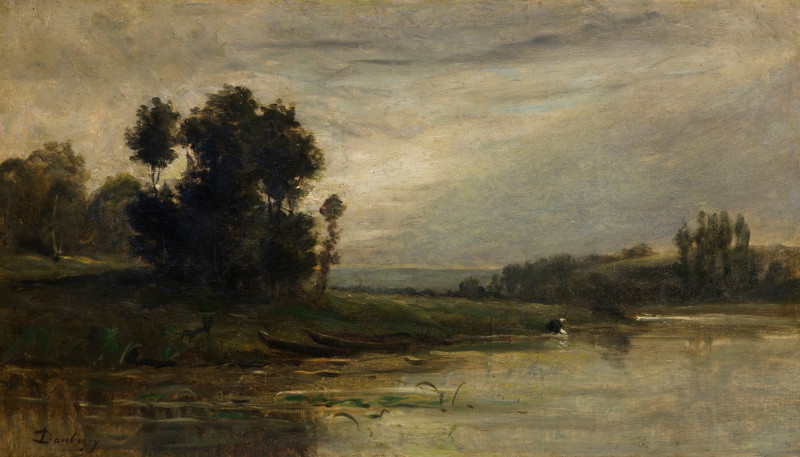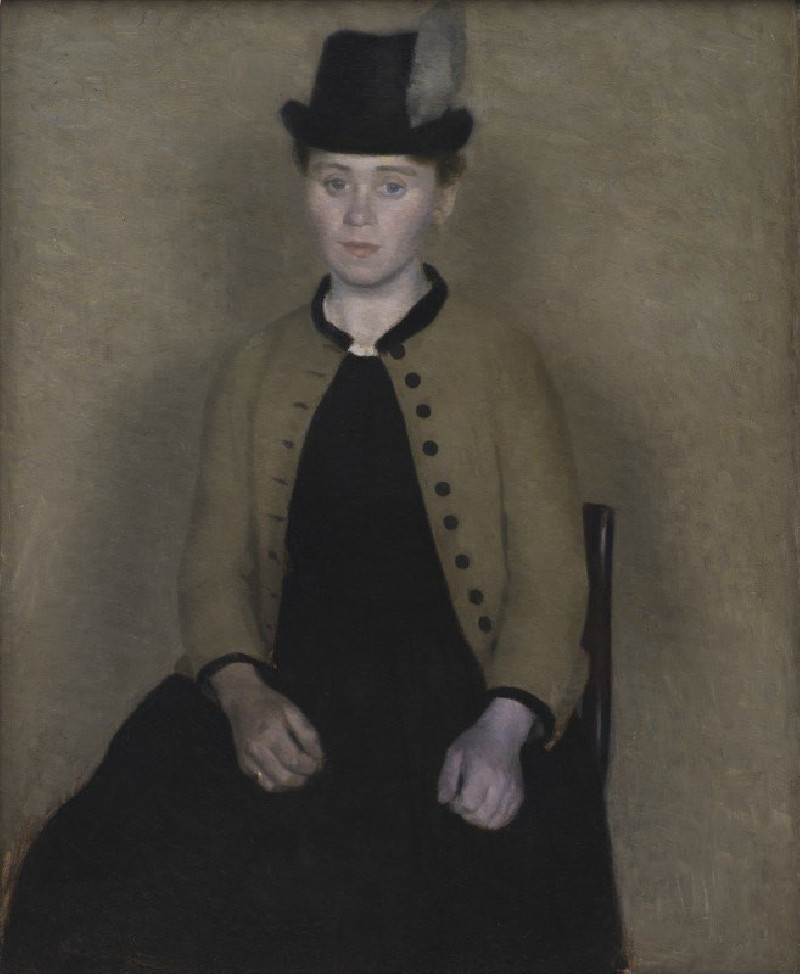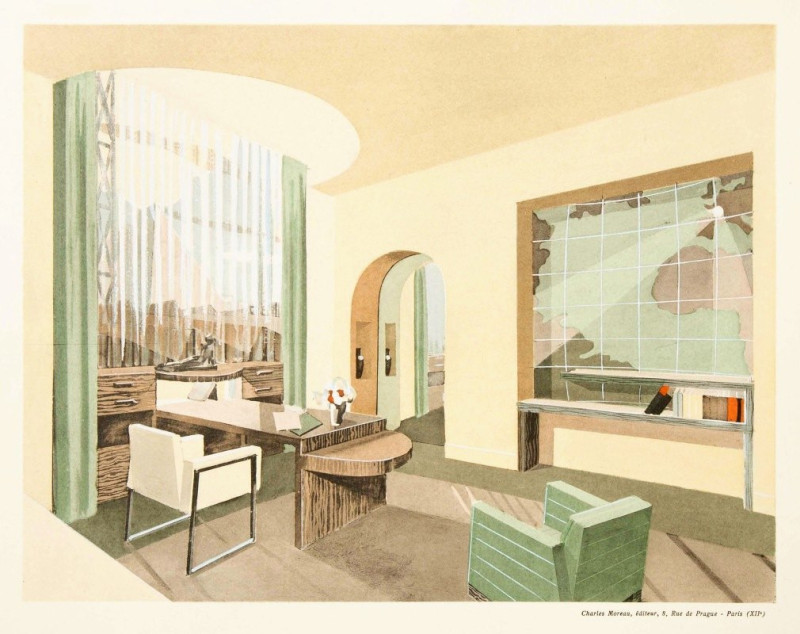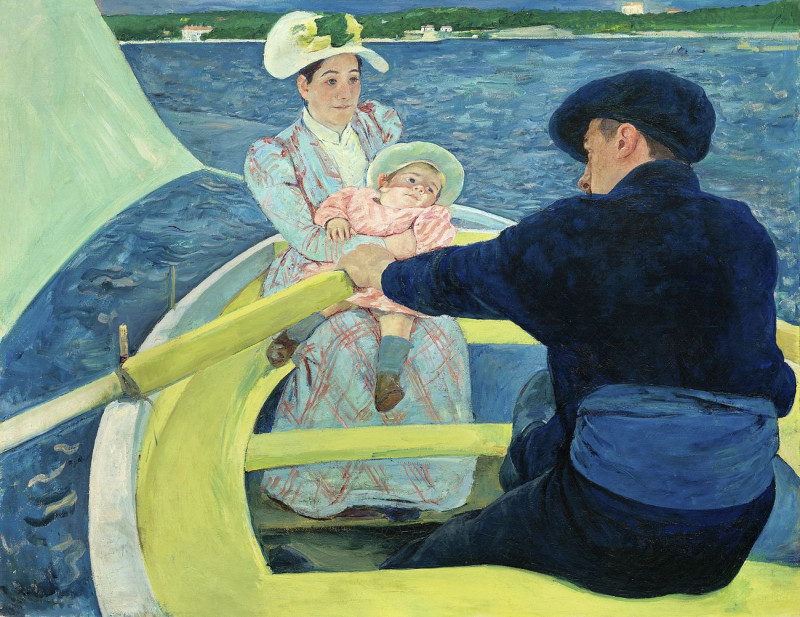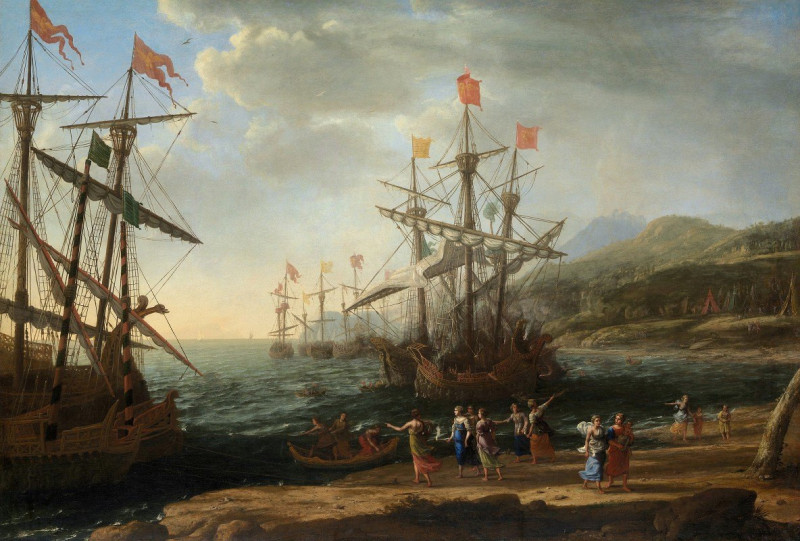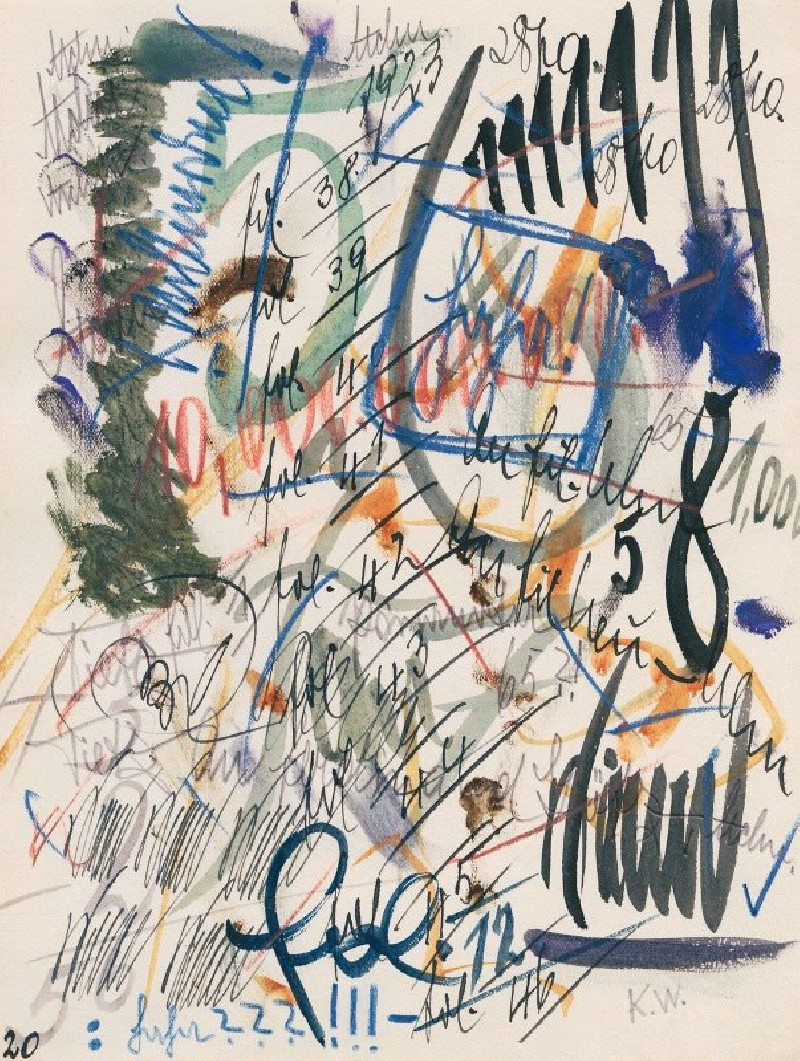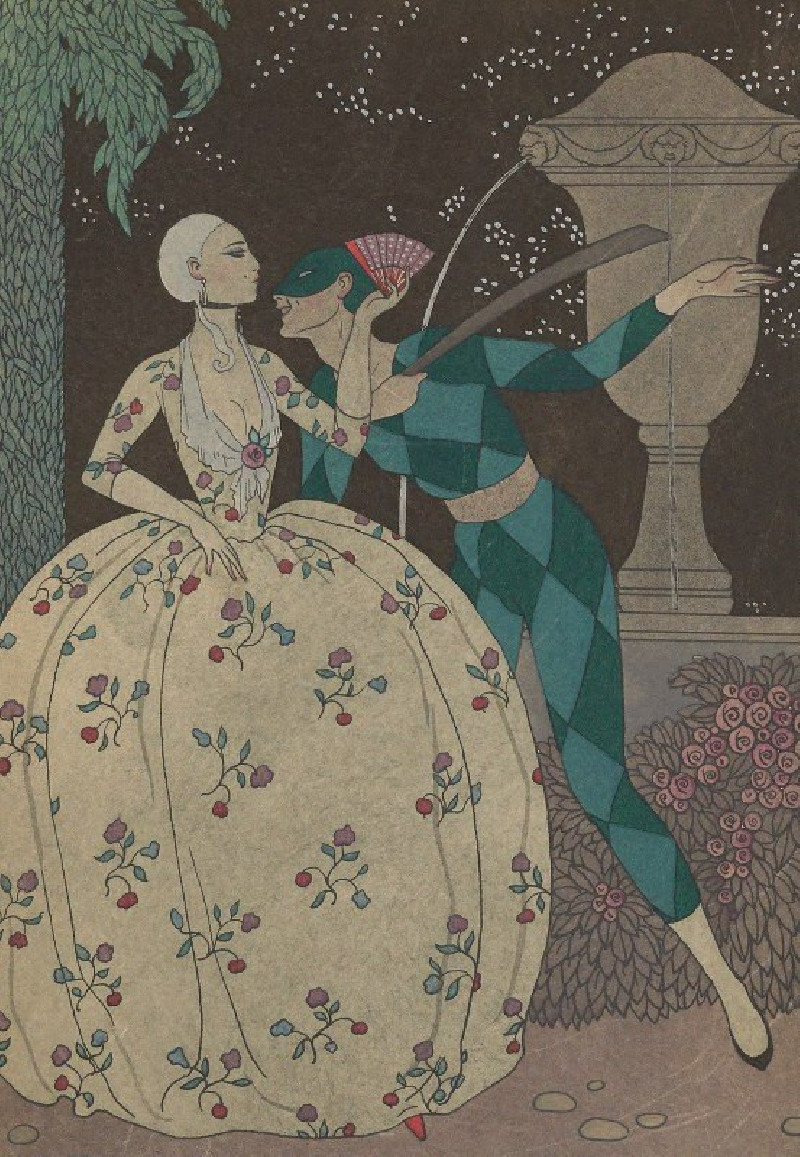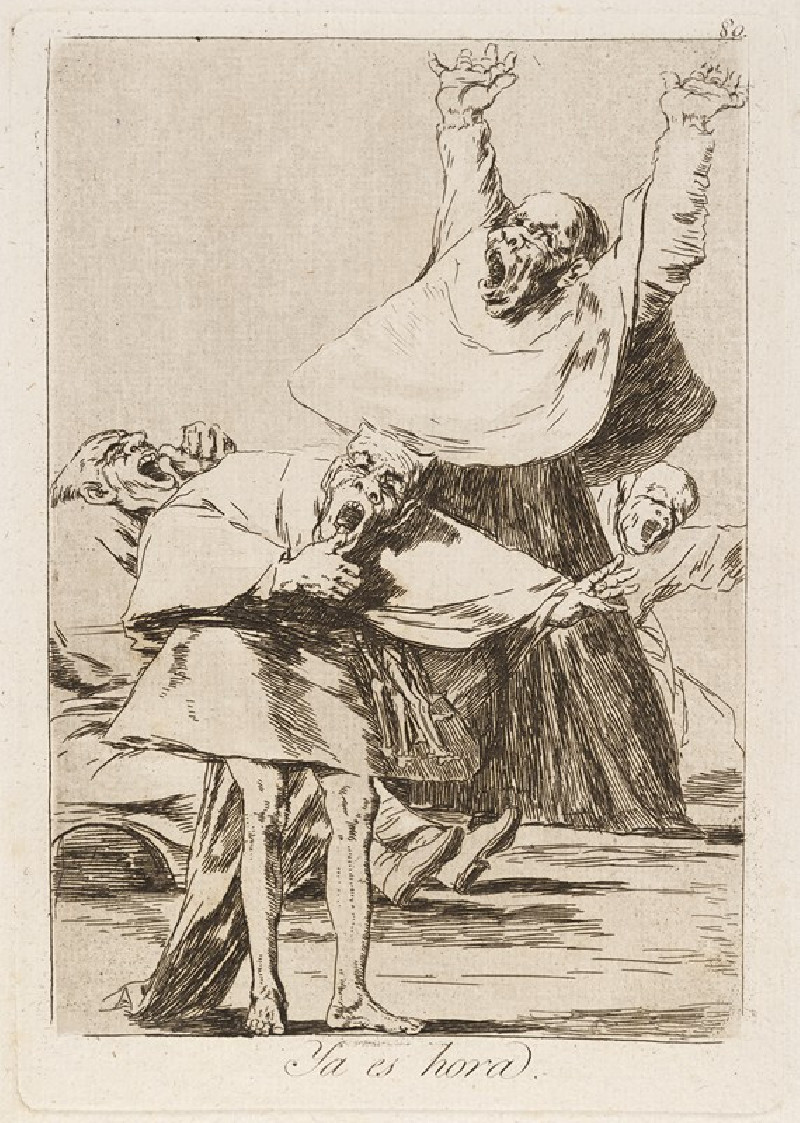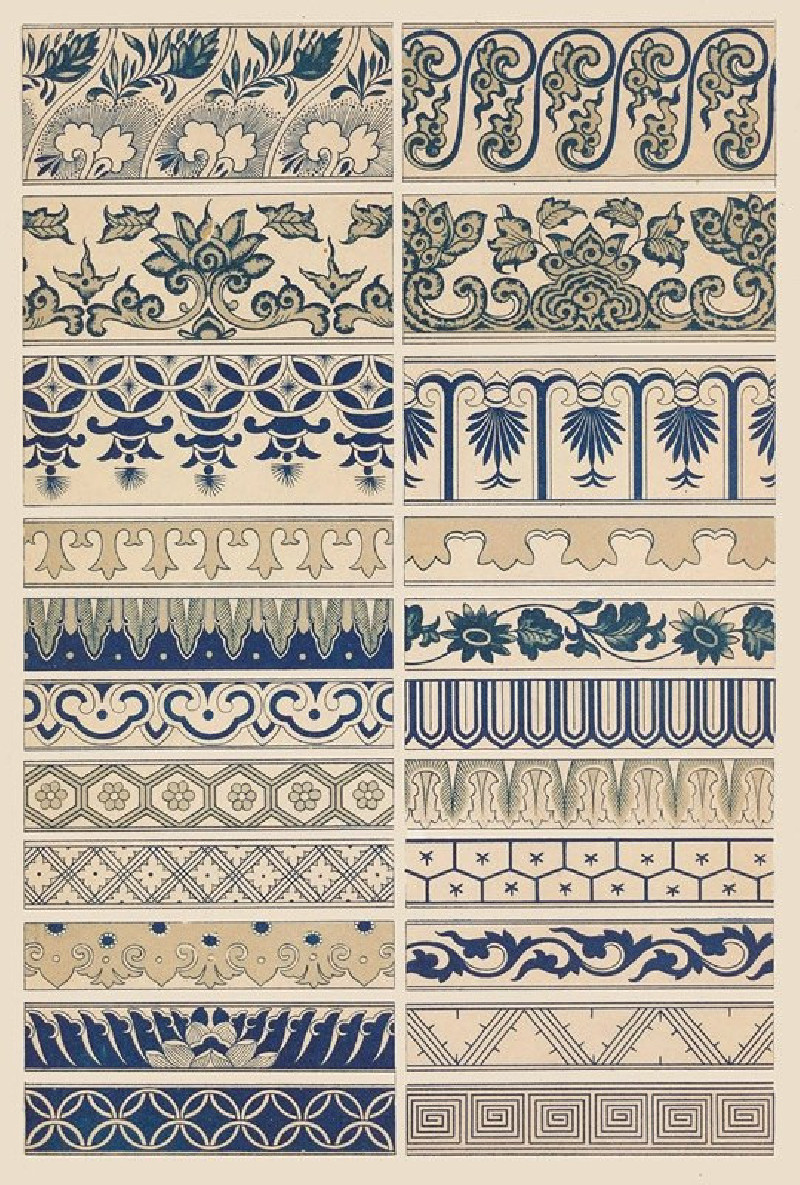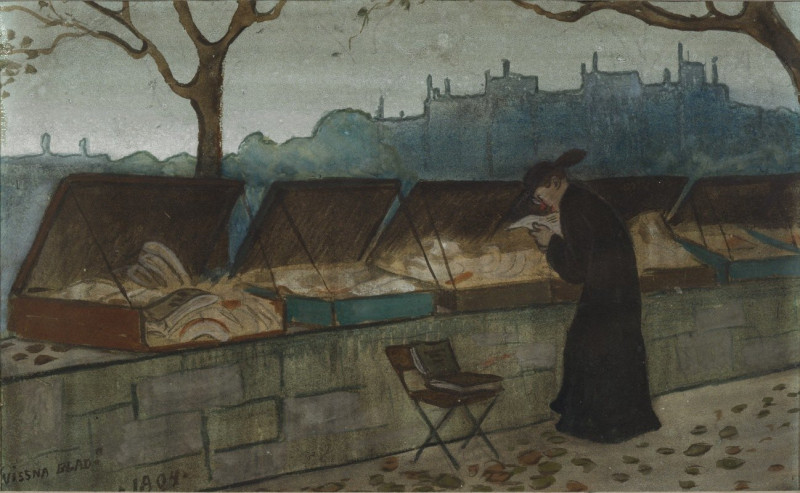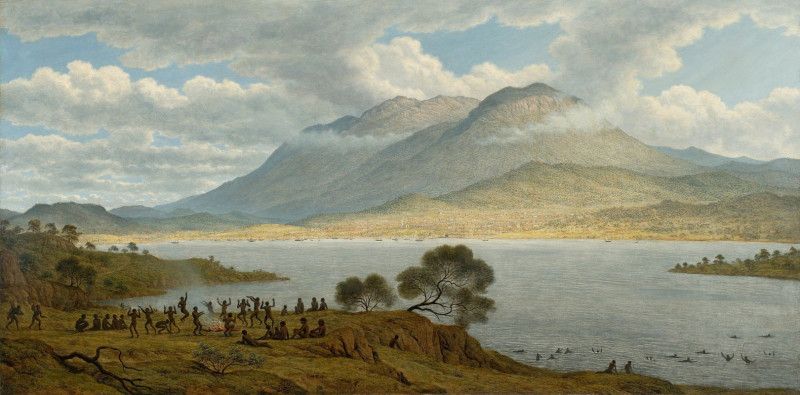Ruisseau sous bois (1866 -1886)
Technique: Giclée quality print
Recommended by our customers
More about this artwork
Discover the serene landscape captured by Charles François Daubigny in his painting "Ruisseau sous bois" (Stream in the Woods, 1866-1886). This masterful work transports viewers to a secluded enclave within a lush, densely wooded area. The painting, filled with a spectrum of earth tones, spotlights the interplay of light and shadow that dances across the forest floor and the gentle stream that weaves its way through the scene.Daubigny's use of intricate brushwork allows the foliage to burst with vibrant life, creating a textured mosaic of greens and browns. The trees, robust in their stature, anchor the composition, while their leaves seem to flutter lightly in the breeze—a testament to Daubigny's skill in rendering the subtle dynamics of nature. This depiction not only embodies the tranquility of a secluded woodland but also reflects the artist's profound connection to nature, capturing an ephemeral moment with enduring beauty.
Delivery
Returns
Charles-François Daubigny (15 February 1817 – 19 February 1878) was a French painter, one of the members of the Barbizon school, and is considered an important precursor of impressionism.
He was also a prolific printmaker, mostly in etching but also as one of the main artists to use the cliché verre technique.

